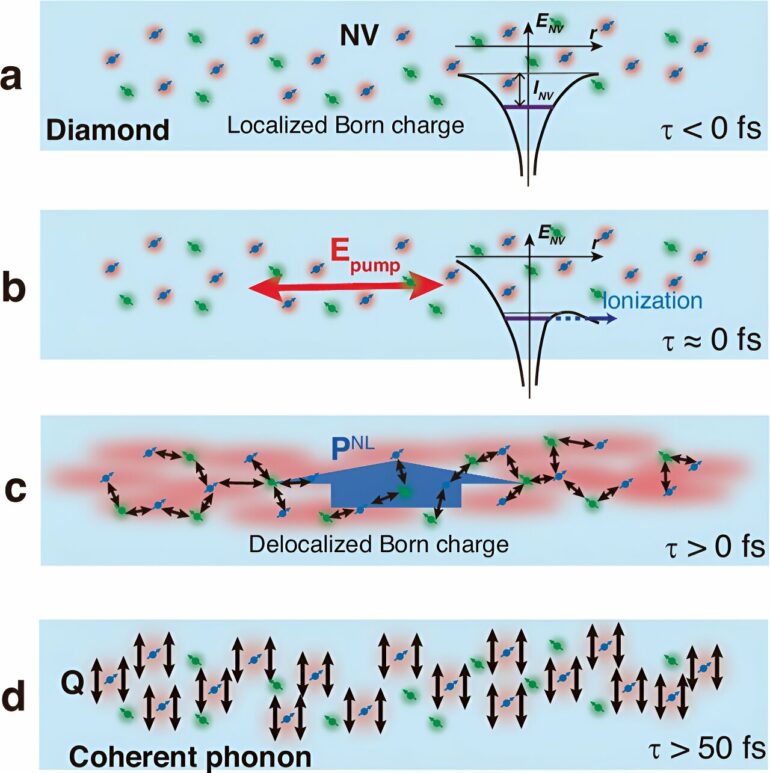A research group led by University of Tsukuba has observed the cooperative behavior of polaron quasiparticles formed by the collective interaction of electrons and lattice vibrations around color centers in diamond crystals.
The discovery was achieved by irradiating diamond crystals containing color centers with ultrashort laser pulses and precisely analyzing the resulting reflectance changes. The findings are published in Nature Communications.
The presence of nitrogen (N) as an impurity in a diamond crystal can lead to the formation of a vacancy (V) adjacent to a carbon atom, resulting in the creation of a N-V (NV) center. This center considerably influences diamond coloration and constitutes a lattice defect referred to as a color center.
NV centers exhibit exceptional sensitivity to environmental variations, including changes in temperature and magnetic fields, through corresponding alterations in their quantum state. This remarkable property can be harnessed to develop a high-sensitivity, high-spatial-resolution sensor.
Notably, the energy levels of the electrons within an NV center either shift or split due to distortion of the crystal lattice surrounding the center. However, the interaction mechanism between the involved electrons and lattice vibrations which accompany this distortion was not completely understood.
The researchers introduced extremely thin sheets (nanosheets) comprising density-controlled NV centers in close proximity to the surfaces of high-purity diamond crystals. These sheets were irradiated by pulsed laser to investigate the lattice vibrations of the involved diamond.
The results revealed a substantial amplification in the amplitude of the lattice vibrations (by a factor of ~13), despite the relatively low density of the NV centers compared to other defects. Subsequently, the charge state of the NV centers was computed through first-principles calculations, revealing a biased distribution of positive and negative charges.
A polaron quasiparticle, which is characterized by a free carrier accompanied by a “phonon cloud,” exists in several forms. Notably, the polaron type proposed by Fröhlich almost 70 years ago is believed to not exist in diamonds.
However, this new investigation demonstrated the emergence of Fröhlich polarons from NV centers throughout the involved nanosheet. Overall, these findings evoke new prospects for quantum sensing based on NV centers that utilize polarons.
More information:
Takuto Ichikawa et al, Cooperative dynamic polaronic picture of diamond color centers, Nature Communications (2024). DOI: 10.1038/s41467-024-51366-x
Provided by
University of Tsukuba
Citation:
Discovering quasiparticles ejected from color centers in diamond crystals (2024, September 27)



